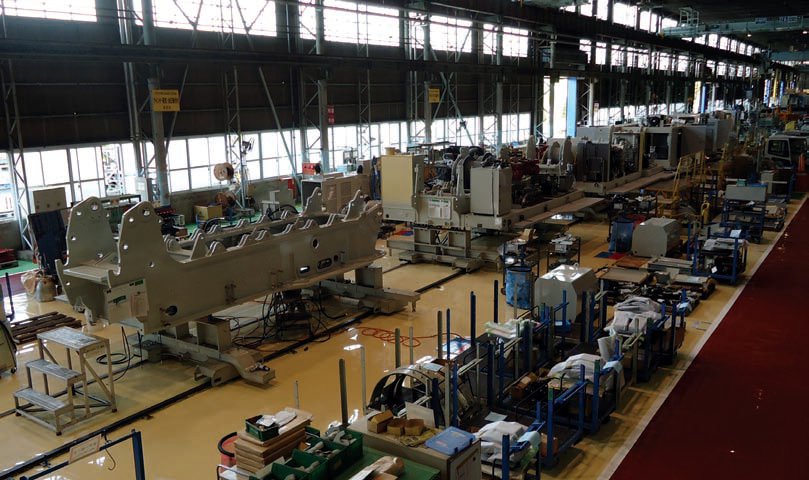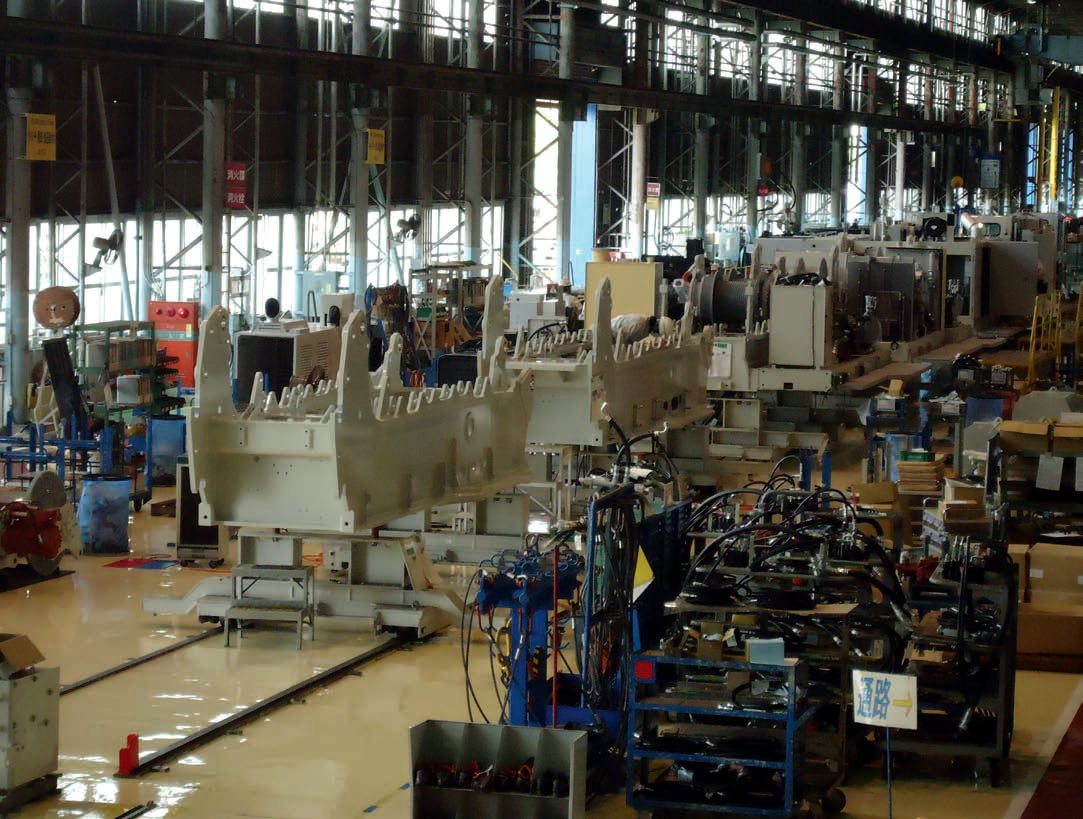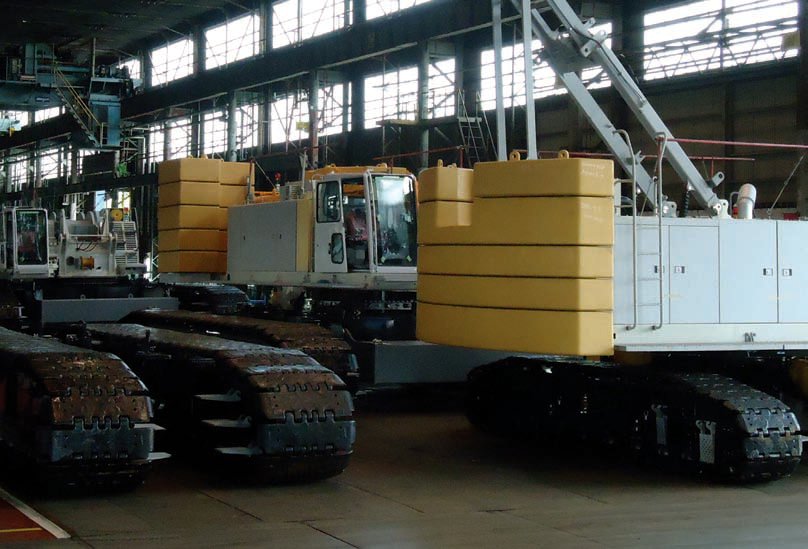Developing together
17 September 2014Cranes Today’s Japan tour continued south, with a visit to Hitachi-Sumitomo’s factory in Nagoya.
Hitachi-Sumitomo Cranes (HSC) was formed in 2002 as a joint venture between Hitachi and Sumitomo. The parent companies have been building cranes since the 1960s. Over the last 12 year s, the company has worked to align the two businesses' cor porate cultures.
Today, the company employs 240 direct employees, and 299 contract staff. At its Nagoya plant, which Cranes Today visited, the company builds crawler cranes up to 275t, a hydraulic lattice boom tr uck crane, a 35t wheel crane; a second plant, Saijou, builds the company's larger crawlers.
The company builds 21 models overall, its own brand domestic and international crawlers, and the 298HSL for Sumitomo subsidiary Link-Belt.
Cranes Today toured the 46,000 sq m plant with Yoshihiro Manabe, senior officer, general manager, production department. The visit starts with the extensive parts in area. Winch and engine assembly for the upper takes three days, with a further four days to mount the sub assemblies on the upper structure.
At the same time, the slewing structure is built, and then fitted on the upper. The entire crane is then mounted on the crawler.
Alongside the main assembly area, other lines manage pipe cutting, lattice boom assembly and boring of milled structures, with trucks carrying heavy components between lines.
Unique crawlers
One of the main differences between the Japanese crawler market, both for HSC and for rivals like Kobelco (profiled on p29), is the use of tower boom cranes, ideally suited to Japan's congested construction sites. These cranes can be assembled with the main boom on the ground, and the jib folded beneath it. The main boom is then raised to 90°, with the jib able to be raised upright or folded right down.
Tomohiko Kurose, president, marketing, sales and customer support, explains, "The biggest advantage of these cranes is that they can crawl right up to the building (with boom up or down). The boom is at almost 90°, so we can crawl very close to the project.
Also recently, contractors have developed a new construction method for warehouses, where they are working from inside the structure. Pillars are built first, and the machine works inside the building, with the structure being built around it. This would be very hard to do with a luffing boom. This requires not only the main boom angle, but a small swing radius, with 360° cover over the whole project envelope, and no space on the edge of the site."
Also typical for Japan are short boom telecrawlers, with faster winches. Unlike European machines, these are targeted at both earth drilling, with attachments, and lifting. Their short, strong, booms are designed for this task.
Its latest cranes in this sector are two new models, with capacities of 100t and 150t. Kurose explains that there had been a big gap on the market between 90t, 120t and 200t machines. These two machines fill that gap, with a high line pull ideal for excavating, hammers, and grab buckets.
Built new, priced secondhand
A second new line of crawlers is being built in HSC's China plant, for export to developing countries. In the past, many customers in Asia had favoured secondhand cranes from Japan. Kurose explains that, three decades ago, there had been a lot of demand in Japan for machines in the 20t to 60t range. After ten years of domestic use, these then found willing customers in developing countries.
However, Japan's economy suffered ten years ago, and crawler crane sales fell. This mean that at the point where these older secondhand machines were themselves coming up for renewal, there was no supply of secondhand cranes from Japan. HSC launched the 55t and 70t E series cranes two years ago to meet this demand for price sensitive, simple machines.
Kurose says, "There aren't many computers or relay systems on these cranes, so they are very easy to operate, maintain and repair. It's easy for customers to do themselves. The machine is manufactured in Hitachi China, using key components from here in Nagoya. Cost-wise and pricewise it is competitive with Chinese machines. We're not selling it in China, but exporting it only. We introduced this in 2012. Since then, we have orders for 150 machines."
New fast lines
This year, HSC is re-organising its production lines to increase capacity. The key to this is to arrange production stations in line with component requirements, not station function.
Kurose says, "The main reason we are making these changes is the current facility is based on welding, fabricating etc, with our current system structured around function. Our new system will combine by components, not by function.
"This factory has been built over forty years, adding futher new functions. This has left it very congested. The Japanese approach is not to use money to move factory, as this will then be passed on to the customer." Instead, HSC focuses on improving its existing plant.
Manabe says, "Our aim is to reduce tranportation time in the fabrication shop to 20% of current. Transport doesn't introduce additional value. Currently, the machining of the main frame is separate from other processes. The lower frame is also very spread out. In our improved layout, all lower frame fabrication is in one area, and all of the main frame fabrication is in one area."


